Everyone has mood swings when bad mood days change with positive mood ones. It’s a natural part of life. However, negative emotions may damage our daily life and mental well-being when they persist for a long time in our lives.
This is why mood tracking has become a popular way to monitor and understand our moods.
Mood trackers enhance your mental and emotional health. This practice can help you identify patterns in your emotional state.
What Is a Mood Tracker?
A mood tracker is a tool that lets you keep track of your daily mood along with other factors like daily activity, sleep cycle, stress levels, and physical health.
In general, it is used to keep an eye on mood patterns and emotional rhythms to uncover any triggers that cause feelings of sadness, stress, lack of sleep or anxiety.

People track their moods for many reasons; the most serious is to prevent mental health conditions or mental illnesses such as bipolar disorder, anxiety attacks, and depression.
You can monitor your emotional state and prevent mental disorders regularly using a visual tool like a mood graph or mood mandala. For gadget lovers, there are a lot of mood-tracking features in mobile apps or daily planners.
So, as you can see, you can easily record your everyday mood.
Benefits of Tracking Your Mood
By keeping a record of how you feel throughout the day is a positive psychology technique, that helps you identify trends in your mood and determine what factors may be contributing to changes in your emotional state. For example, you may notice that you tend to feel more anxious on days when you don’t get enough sleep or that your mood is better after you exercise.
One of the benefits of mood tracking is the ability to identify patterns and strong emotions that may push you to unwanted behaviors.
Tracking your mood allows you to identify coping mechanisms that bring up difficult emotions. It’s a quick and easy way to learn more about your mental health condition and plus understand how external factors affect your emotional state.

For example, if you notice a pattern of very low dips in your mood scale, you can find factors that cause negative mood and help deal with it.
Types of Mood Trackers
There are various types of mood trackers, including mood journals, mood charts, visual trackers, and mood tracker apps.
Mood Journal
Keeping a mood journal is an easy and classic technique for tracking your moods. It means recording your daily mood regularly and any significant experiences or emotions you might have gone through.
You can use a simple notebook or diary where you write down your emotional state every day. Also, put additional notes, such as the things or events that affected your mood.

Mood Chart
A mood chart is a visual representation of your mood over a period of time. You can daily record your mood on a chart or graph, making it colorful and fun to spot patterns and trends.
Create a chart or graph that includes the dates and your corresponding mood rating for each day. Your mood rating can be on a scale of 1-10 or any other range. For example, you might rate your mood as “happy,” “content,” or “sad.” The important thing is to be consistent with your ratings so that you can accurately track your mood patterns over time.
Once you’ve created your pie chart or graph, it’s time to start tracking your moods. At the end of each day, take a few moments to reflect on how you’re feeling and assign a mood rating to that day. You can do this in a notebook or on a digital platform.
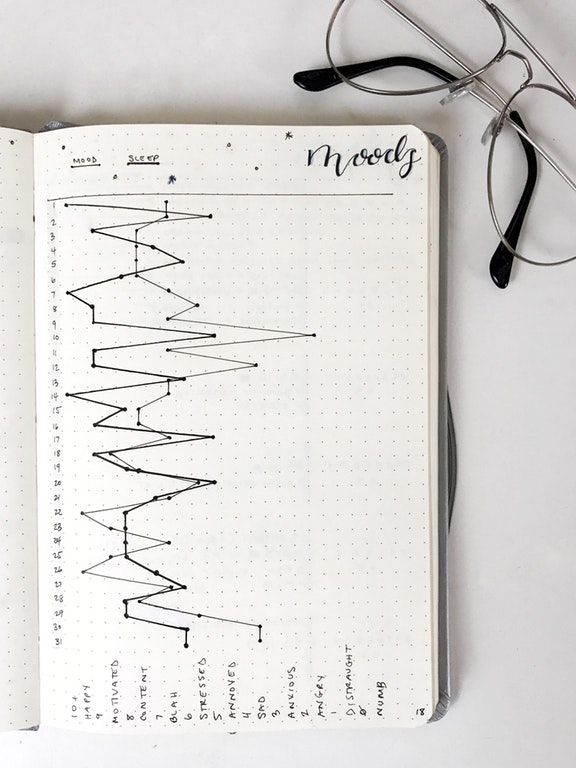
Visual Tracker
A creative way to monitor your mood using colors and graphics is using a visual mood tracker. For example, you can use stickers or color coding to obtain insight into your emotional rhythm, or you can make a mood mandala where you color in a piece of the picture to symbolize your daily mood.
Other options include air balloon mood trackers, a bullet journal, monthly mood trackers, and mood trackers that you can attach to objects.
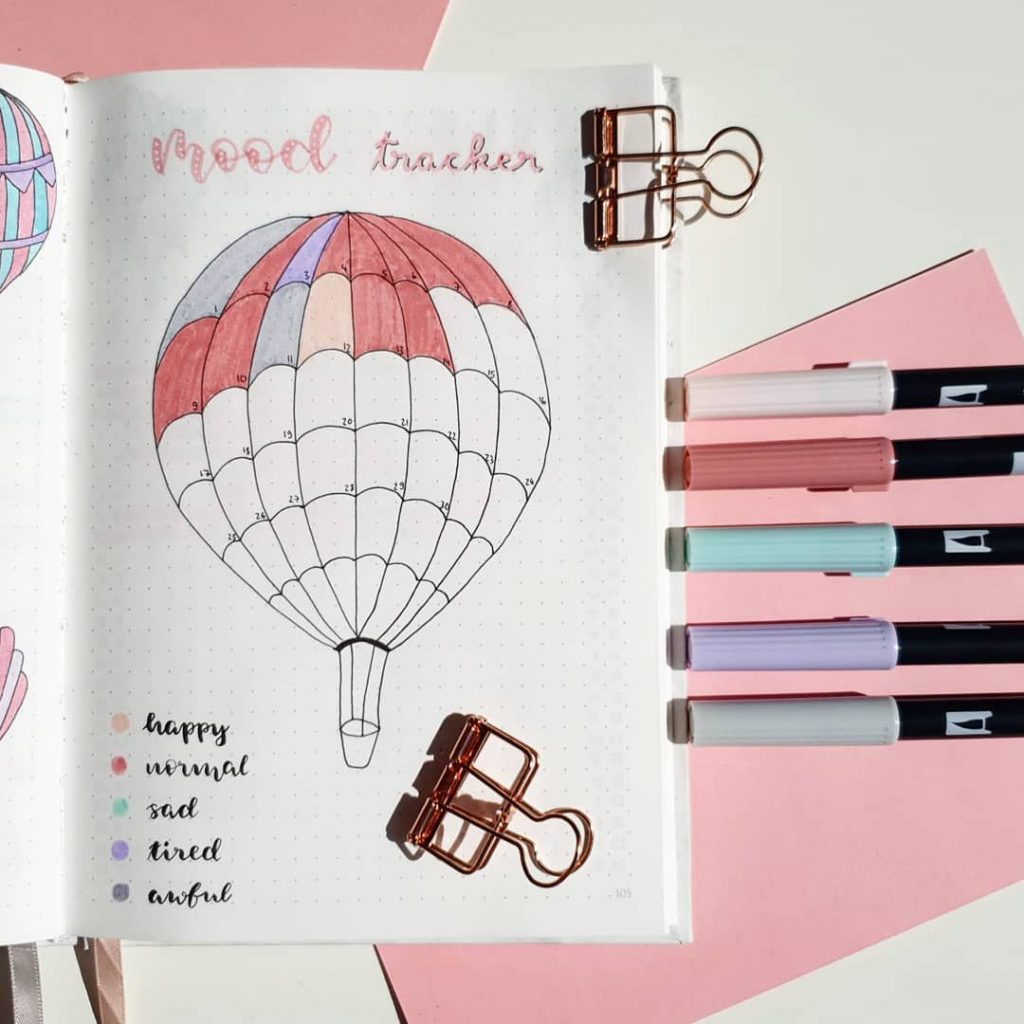
Mood Tracker Apps
Mobile apps that let you log your daily mood include mood tracker apps. In addition, they provide customization options, a Symptom Check, and feature analysis to assist you in understanding your mental health situation.
Using a mood tracking app, you can easily record your daily activity and mood diary and share this information with mental health providers. Smartphone apps often provide additional features, such as mood analysis and personalized insights.
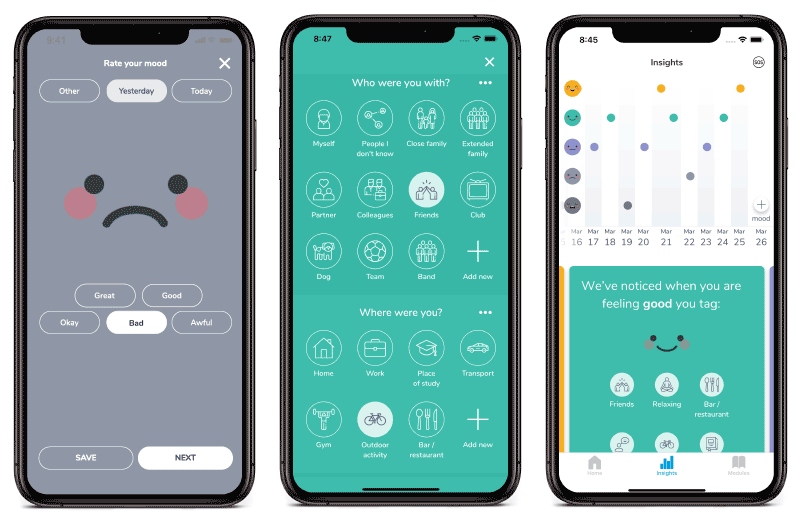
How to Use a Mood Tracker
To use a mood tracker, choose the one that works best for you and log your mood. Whether you prefer a simple journal or a digital app, choose one you’re comfortable with. Try to be as honest and accurate as possible, and record your mood at the same time each day.
You can learn how your emotions impact your everyday routine by measuring your mood regularly. You’ll start to notice patterns in your emotional state over time, which will help you highlight areas that want development.

By becoming more aware of your emotions and the factors that affect them, you can make positive changes to your lifestyle and take control of your well-being.
Tips for Tracking Your Moods
The following tips will help you make the most of your mood tracker:
- Form a habit of it: try to enter mood at regular intervals (at the same time each day) to create a habit.
- Set a goal: What do you hope to achieve by tracking your moods? Do you want to identify triggers, monitor medication effectiveness, or gain a better understanding of your emotional patterns? Having a clear goal in mind can help you stay motivated and focused.
- Keep it simple: Choose a user-friendly mood tracker that fits your lifestyle and captures key mood features.
- Be honest: to get the most accurate results, be honest about your emotional state during personal sessions with yourself, even if it’s not always positive.
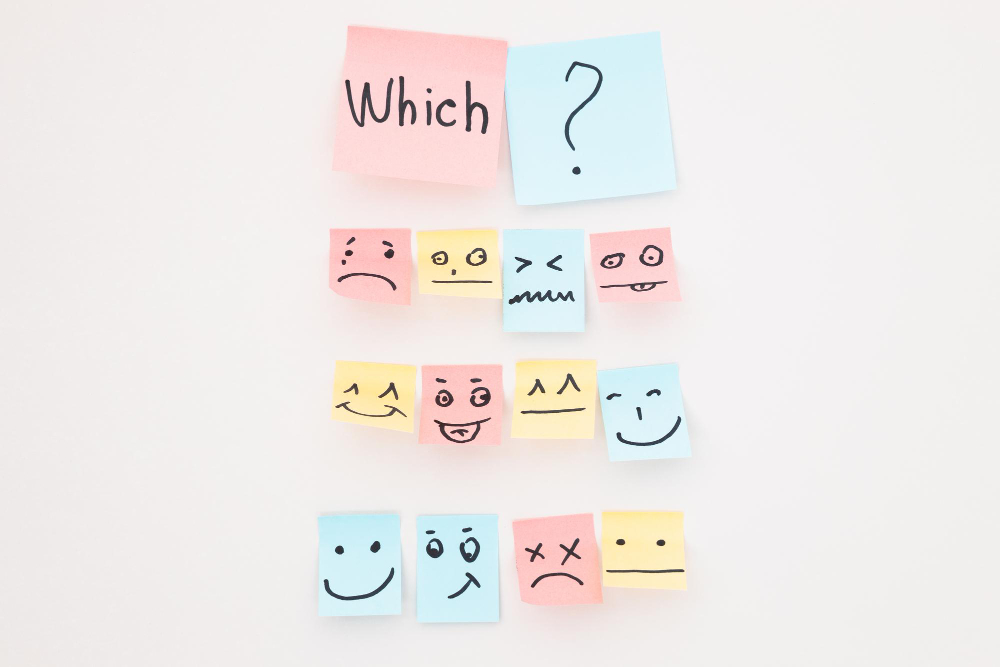
- Don’t overthink it: remember that mood tracking is about identifying patterns, not analyzing every emotion.
- Customize your mood tracker: use a visual tool like a mood graph or daily mood scale to analyze your mood patterns.
- Identify external triggers: take a note writing down all factors that affect your mood.
Cheqmark: Best Mood Tracker for Improved Emotional Well-being
If you’re looking for a reliable and user-friendly mood tracker, Cheqmark is the perfect choice. With its simple interface and customizable features, Cheqmark makes it easy to create a printable mood tracker, track your emotions, and identify patterns in your emotional state.
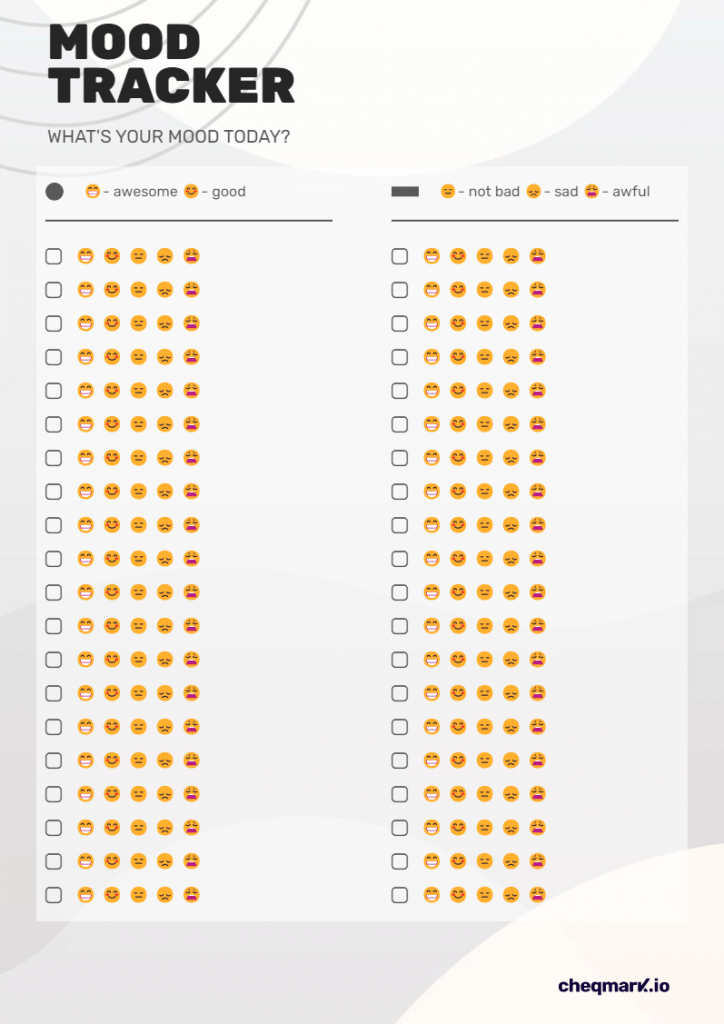
In addition, you can choose and modify a ready-to-use mood tracker or start from the stretch and create your own designed mood tracker.
Conclusion
In conclusion, mood tracking is helpful for people who want to understand their emotional experiences and accuracy in mood better. People may quickly log their daily moods and emotions using mood-tracking applications, identify patterns, and learn what influences their emotional state.
Mood tracking is a valuable addition to behavioral therapy and can help manage emotions in certain situations, positively impacting their daily lives.
While mood tracking can be a burden at times, the benefits of mood tracking far outweigh the novelty period. Regular mood tracking can help you identify triggers for negative emotions and mood fluctuations and develop strategies to cope with them better. In addition, by tracking your mood, you can gain insight into your emotional experiences and a more positive outlook.
Moreover, mood tracking apps offer dedicated mood-tracking features and person-to-person social interactions. These apps not only allow you to track your mood but also provide a platform to connect with others who are also tracking their mood and sharing coping strategies.


